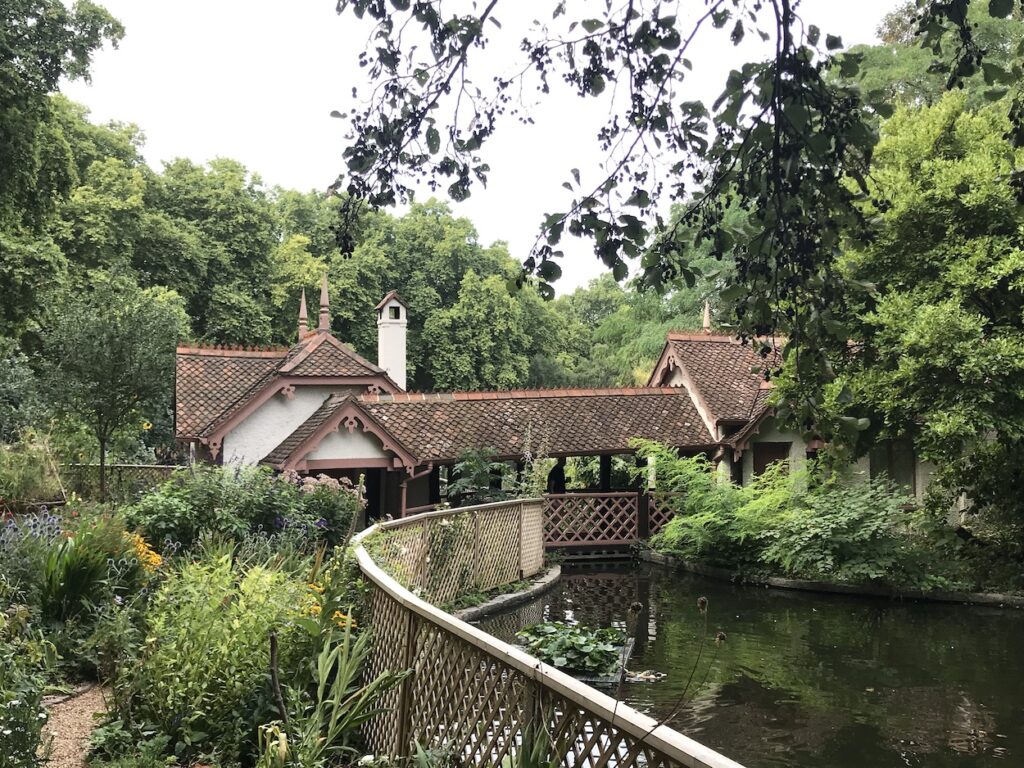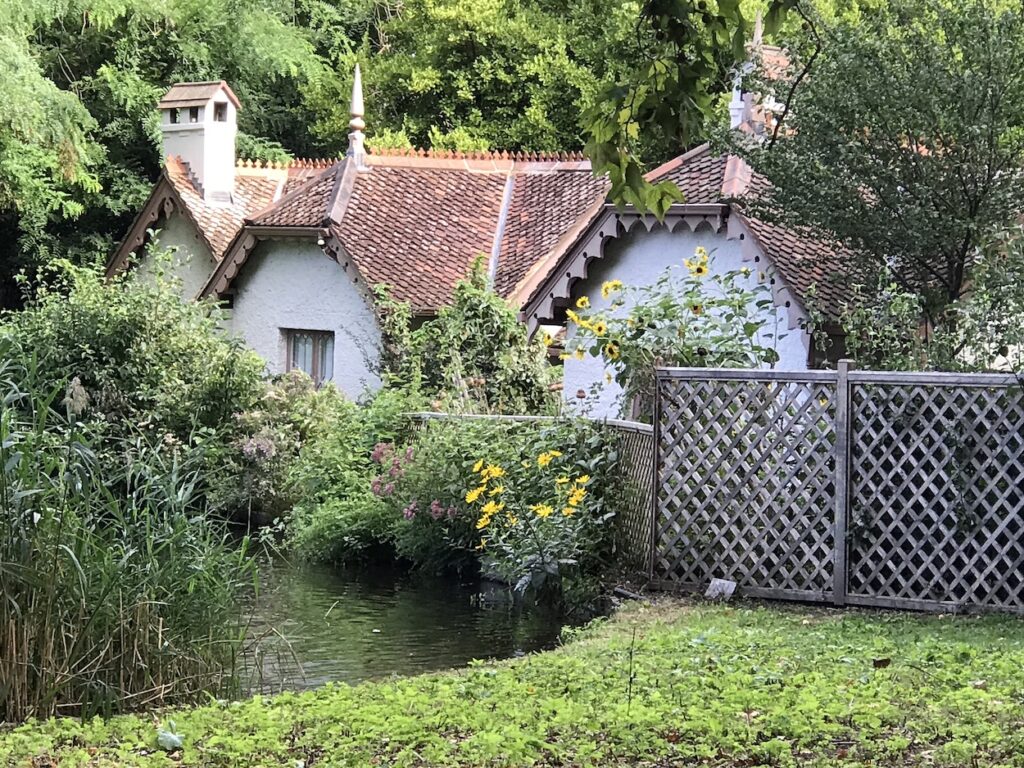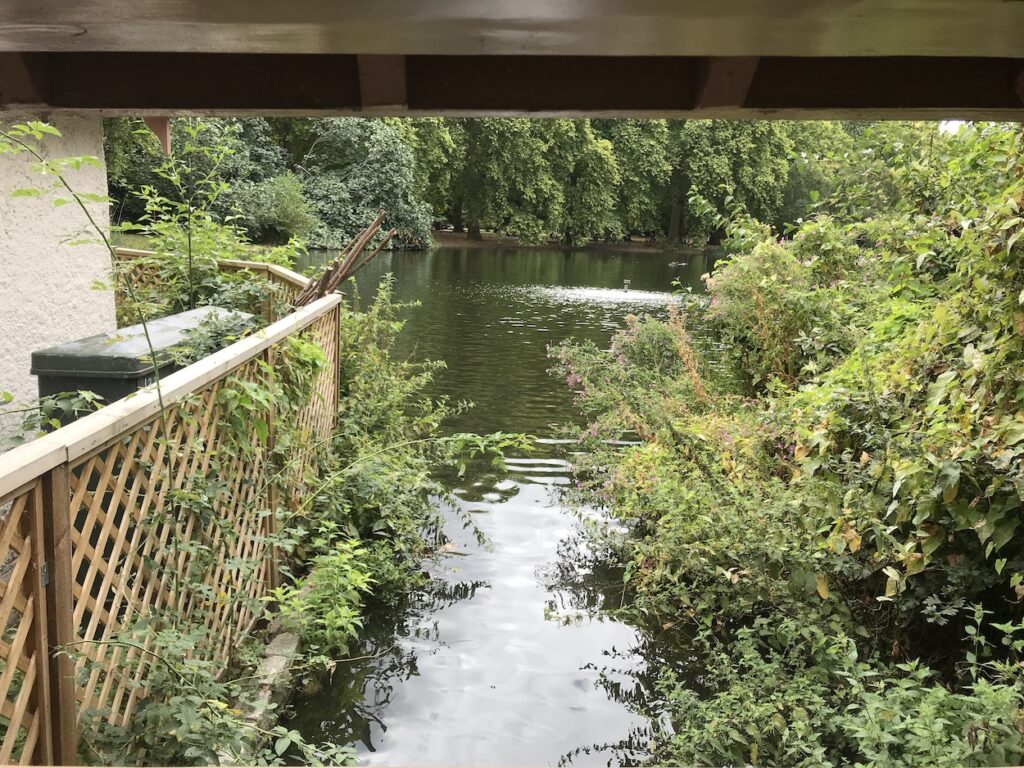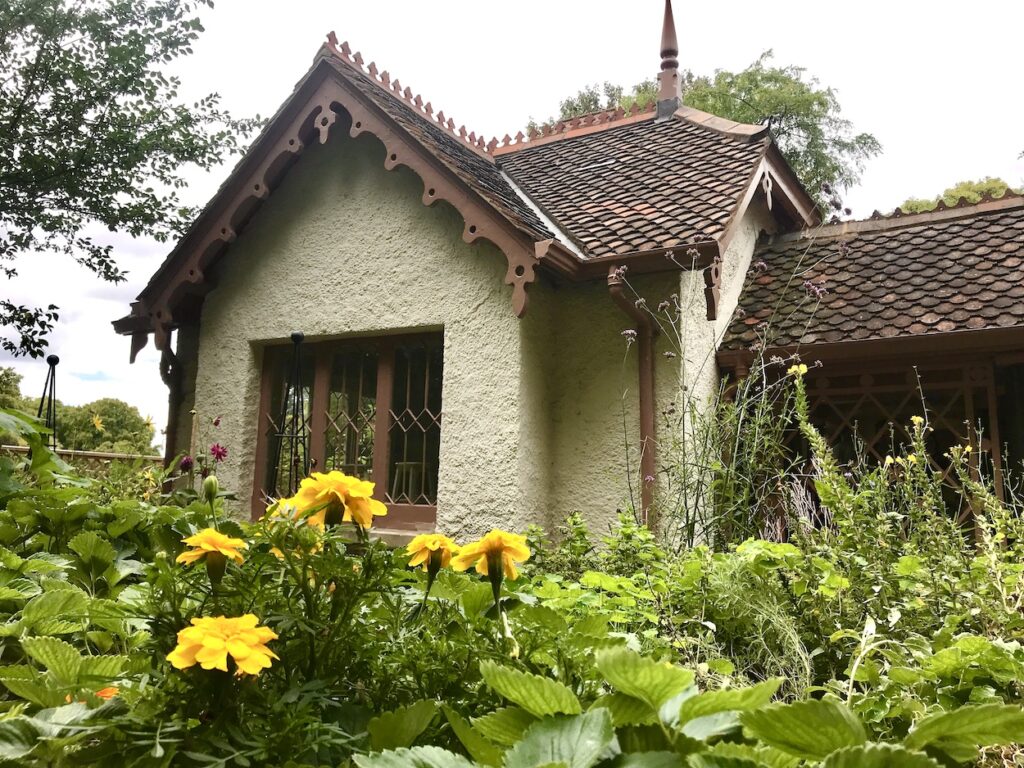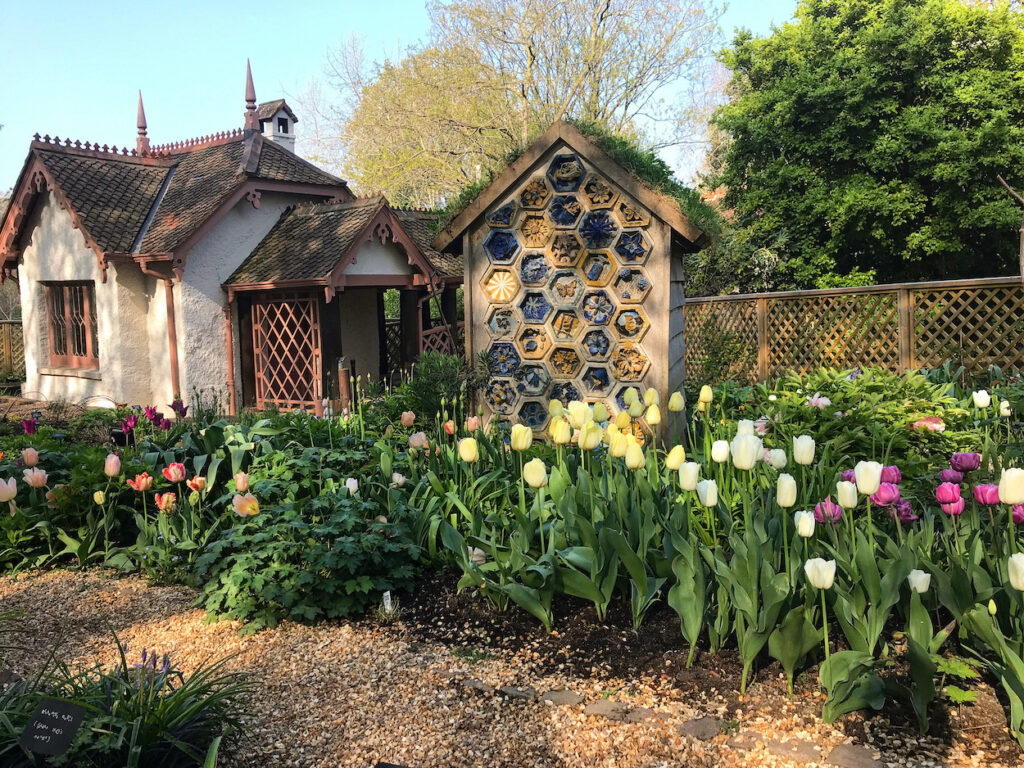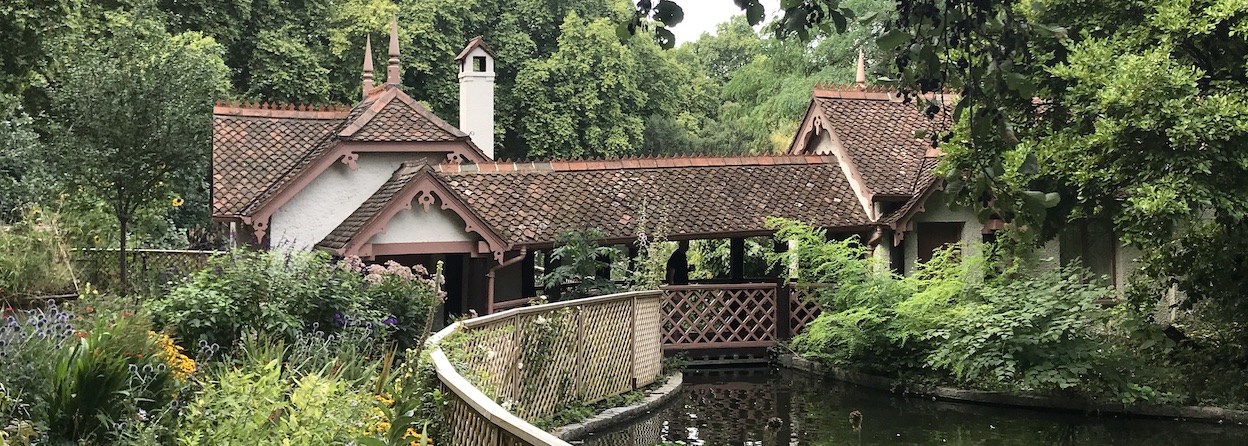
It’s somehow absolutely typical of london that some of the closest neighbours to George Gilbert Scott’s huge Italianate Foreign Office building is a pair of one-storey wooden swiss-style chalets – and I’d venture that these two star in more photos than their much grander neighbour.
This is the Birdkeeper’s – or Duck Island – Cottage, built in 1841 at the best of the Ornithological Society of London as a residence for a St James’s Park birdkeeper, with a clubroom for the Society making up the pair. The cottage is on the aforementioned Duck Island and it is linked to the clubroom by a covered bridge or loggia, although the channel that separated the ‘island’ from the rest of the park was filled in in the 1880s. The architect was John Burges Watson, who is not well-known. He designed St Mary’s church in Staines, St Mary Magdalene, South Holmwood, and won the competition for the new Kingston Bridge, although his plan was not used.
(The history of birdkeeping in St James’s Park is much older than 1840. James I (1603-1625) had aviaries in the park – hence ‘Bridcage Walk’, one of the perimeter roads of the park – and the ‘Keeper of the King’s Birds’ under Charles I was Edward Storey, who gives his name to Storey’s Gate, the road to Parliament Square. At this time, the birds weren’t just decorative, but many were bred and captured for the king’s table.)
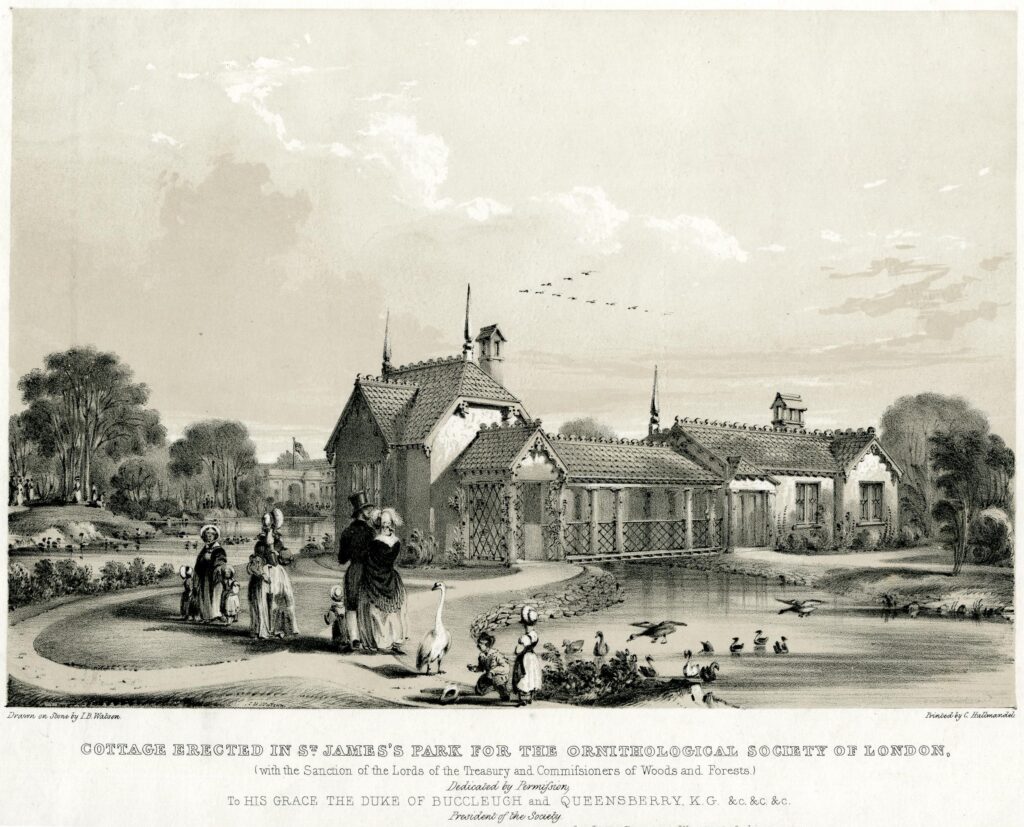
The cottage was a home, not just an office or ‘day residence’. In fact, one recent birdkeeper, Thomas Hinton, lived there from 1900-1953, raising a family there. The most recent residents were “two spinster park keepers” who lived in the – slightly modernised and pebble-dashed – cottage until 1980. Following their departure the cottage was restored and a channel dug under the old bridge to make Duck Island a proper island once again.
It is now the home of the London Parks and Gardens Trust, and they have created an Arts and Crafts style cottage garden, with flowering beds and a kitchen garden of vegetables. Stand and look at it, with your back to the government buildings, or even stroll onto the covered bridge, and it’s possible – just for a moment or two – to imagine oneself in the countryside; then the noise of the city kicks in again and the moment is lost.
